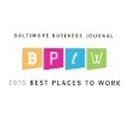
By: Leslie Robert Stellman, Esq. lstellman@pklaw.com
(Stayed tuned with COVID-19 Updates on PK Law’s Business Continuity and COVID-19 Update Page)
Since the outbreak of the deadly COVID-19 coronavirus in the United States, individual workers and groups of workers have begun to stage walkouts and other expressions of fear and concern over potential exposure to the virus. It is hard to argue that these fears are unfounded, given the swift and easy spread of the virus. The immediate consequences of such fears, whether real or imagined, has been a number of highly publicized walkouts at such well known named companies as Instacart, Whole Foods, and Amazon. In each of these instances, none of the employers in question were unionized, yet collective action took place by workers claiming to have been denied minimal personal protective equipment (“PPE”) and who have even demanded additional “hazardous duty” pay in consideration of their continuing to go to work.
There are a number of legal issues that these walkouts have raised. As the number of coronavirus cases in the United States continues to climb, with an attendant rise in virus-related deaths, it will not be unexpected if workers in a variety of occupations and industries ranging from delivery drivers to grocery and pharmacy workers to health care workers who are on the front lines of the pandemic. If such work stoppages escalate throughout the nation, we may soon see spot shortages of essential goods and services, including food and pharmaceuticals. It is the fear and concern of these walkouts which are facing those employers who remain in business and who need their employees to show up for work each and every day, regardless of their subjective fears of being exposed to the virus.
One of the most fundamental principles of the 1935 Wagner Act, as amended by the 1948 Taft-Hartley Act governing collective bargaining in the private sector, is that even non-union workers have the statutory right to engage in what the law calls “protected concerted activities.” This means that even workers who have never organized or joined a union have the right under federal law to walk off their job without fear of consequences in order to protest what they believe to be inadequate or dangerous working conditions. This concept was reinforced by the United States Supreme Court in its NLRB v. Washington Aluminum Co., a 1962 ruling in which the Court held that workers had the right to walk off the job in a Baltimore machine shop because the plant was bitterly cold following a break-down of the company’s furnace. When the employer fired the employees who had walked out, the NLRB found that they had engaged in protected concerted activity which was protected under Section 7 of the Taft-Hartley Act. Accordingly, the NLRB, in a ruling upheld by the Supreme Court, ordered the strikers reinstated with back pay. In so ruling, the Court found that the company’s established rule forbidding employees to leave their work without permission was not justifiable cause for their discharge. As the Court noted:
Concerted activities by employees for the purpose of trying to protect themselves from working conditions [found to be] uncomfortable are unquestionably activities to correct conditions which modern labor-management legislation treats as too bad to have tolerated in a humane and civilized society like ours.
The Washington Aluminum case is alive and well today. In response to the COVID-19 pandemic, unions like the Communications Workers have referenced the case in their website, offering the following Q&A to its members:
My employer refuses to close down even though a coworker tested positive for COVID-19. We don’t feel safe. Can we walk out if the company isn’t listening to us?
Under some circumstances, yes! Workers have the legally protected right to walk out in protest of critically unsafe working conditions. In Detroit, bus drivers refused to drive until the buses were properly cleaned. Their refusal of working in unsafe conditions was protected concerted activity. They are now back to work. In an example prior to the Coronavirus, a group of employees in Omaha, NE walked off the production line to protest the speed of the line and other working conditions, and thereafter met with the plant manager. An NLRB administrative law judge found that the Employer had unlawfully discharged the employees in retaliation for engaging in concerted protected activity and ordered the Employer to reinstate the employees with full back pay and benefits.
Source: www.cwa-union.org (“COVID-19” FAQ for Engaging in Protected Concerted Activity to Stay Safe from COVID-19 at Work.”).
In order to be protected by federal law, concerted activity requires the actions of more than a single worker. Thus, if only one individual insists that he feels unsafe, if such concerns appear to be unreasonable, appropriate disciplinary action may be taken against him. And engaging in protected activity such as complaining of a fear of an unsafe workplace will not immunize an employee from discipline or discharge if he engages in misconduct. The current situation at a Staten Island Amazon warehouse involves an employee who insisted he was terminated for having complained of insufficient personal protection from the coronavirus. Amazon, in turn, claimed to have fired the worker because he refused to go home after coming into contact with a fellow employee who showed symptoms of the virus. The case is presently before the NLRB, and as it turns out the fired employee was being provided legal support from the Retail, Wholesale & Department Store Union (“RWDSU”).
Unions are clearly taking advantage of the COVID-19 pandemic to insist upon additional compensation for members already subject to union contracts as well as better safety precautions in the workplace, such as more PPE. While employers are entitled to resist any changes to their negotiated contracts, unions have been pressuring employers to offer telecommuting options and supplemental agreements (called “MOU’s” or memoranda of agreement) covering the unique workplace circumstances presently facing those employers that choose to remain in operation. If an employer is prepared to make significant alterations to working conditions due to the coronavirus, such as changing shifts, hours, or locations, there is a duty to negotiate these changes with the union representing the affected workers. Major business decisions such as shutting down an operation altogether, unless already addressed in an existing union contract, requires negotiations over the impact of such a decision on the workforce. Failure to engage in such negotiations may lead to unfair labor practice charges and claims of bad faith bargaining.
Even in a union workplace where there is an existing contract containing a “no-strike” clause, workers have the right to engage in a so-called “wildcat” walkout that is not sanctioned by the union if doing so is deemed to be protected concerted activity. East Chicago Rehabilitation Center v. NLRB (7th Cir. 1983). In other words, a union’s repudiation of an illegal walkout by its members does not necessarily render the strike unprotected if it is based upon concerns over working conditions, such as alleged safety problems due workplace exposure to the coronavirus. If the union itself sanctions or calls such a walkout, it may be enjoined if it is in breach of a contractual no-strike clause or, in the case of a health care institution (such as a hospital or nursing home), if it is not preceded by a 10-day notice, as prescribed by Section 8(g) of the Taft-Hartley Act. In a 1974 decision the U.S. Supreme Court held in Gateway Coal Co. v. United Mine Workers that employees in a walkout, even if it over bona fide safety concerns, could be punished if their union contract mandates that such disputes proceed to binding arbitration.
A classic safety-based walkout was found to be protected under the Tart-Hartley Act in the 1982 federal appeals court decision of NLRB v. Tamara Foods, Inc. There, 11 workers left their job over hazardous ammonia fumes, and when they were fired, the NLRB ordered they be reinstated with back pay. However, where a walkout was found to be based upon an unreasonable rationale, it was not deemed protected, and employees engaging in such action were properly disciplined. In one 1979 decision, a federal appeals court in Denver noted the following relevant scenarios involving informal employee walkouts over safety hazards:
In Du-Tri Displays, Inc., 231 NLRB 1261 (1977), the condition complained of by the employee here was lacquer fumes which were present in the plant. There was a threat to obtain a National Institute of Occupational Safety & Health study for the benefit of all of the workers.
The NLRB held that the fact that the fumes did not present a health hazard did not render unprotected the efforts to remove what was honestly believed to be a danger.
See Alleluia Cushion Co., Inc., 221 NLRB 999 (1975). Here an employee was discharged for reporting lack of safety conditions to OSHA. It was said that there was a sort of constructive, concerted action because he was acting on behalf of other employees.
Similarly, under the federal Occupational Safety & Health Act and many analogous state laws, there is a so-called “general duty” obligation to “furnish to each employer’s employees “employment and a place of employment which are free from recognized hazards that are causing or are likely to cause death or serious physical harm to [its] employees.” This same provision of the statute compels employees to conform to safety requirements, which today would include “social distancing.” This means that employers are free to discipline employees who fail to adhere to workplace safety expectations. Section 11(c) of the OSHA law prohibits retaliation against employees who voice legitimate or reasonable safety concerns. According to the U.S. Department of Labor in a regulation intended to interpret this provision, an employee (or group of employees) has the right to refuse to do a task if: (1) the employee or employees have first asked the employer to eliminate the danger, and the employer failed to do so; (2) the employee or employees refused to work in “good faith,” meaning that he, she, or the group of workers “must genuinely believe that an imminent danger exists and a reasonable person would agree that there is a real danger of death or serious injury;” and (3) there is insufficient time due to the urgency of the hazard to have it corrected through regular enforcement channels, such as requesting an OSHA inspection.
Thus, before a worker or group of employees can walk off the job with impunity, OSHA requires that they first ask the employer to eliminate the danger. If the perception of danger is deemed to be reasonable, employees may not be retaliated against for refusing to work. The question in the current environment is whether employees may be deemed to have a reasonable right to refuse work due to a “real danger of death or serious injury.” In Whirlpool Corp. v. Marshall, the Supreme Court in 1980 upheld the Department of Labor regulation that supported the right of workers to refuse to work at unsafe jobs, but reaffirmed Congress’ intent that such a walkout would be without pay.
Merely being fearful that a workplace may be the source of the virus and that one’s presence in a particular workplace poses a risk of contagion may not be sufficient to justify a walkout or refusal to work. In a 2001 decision, the federal appeals court for the District of Columbia rejected a retaliation claim following the discharge of an electrician working in a hazardous environment where he was tasked with destroying chemical weapons. The court in Wood v. Department of Labor rejected the employee’s claim that he was given insufficient training and inadequate PPE, thus his discharge for walking off the job was upheld. Choosing not to address the underlying concerns expressed by the employee, the Court observed that under OSHA, only the Secretary of Labor could determine whether retaliation occurred, and with the Secretary’s refusal to so find, the termination was upheld. The concerns expressed by the employee in Wood, however, are quite similar to those employers are facing today: inadequate respirators and an unapproved face piece, for example. Despite failing to pursue a retaliation claim, OSHA cited the employer with inadequate safety protection.
It is likely that OSHA and its state counterparts will be called into numerous workplaces in order to investigate employee- or union-initiated complaints of inadequate PPE or other safety hazards in the face of the coronavirus pandemic. The issue of citations by OSHA or their state counterparts will support retaliation claims against employers who punish workers for walking out due to perceived. Just this week OSHA issued a guidance on preparing for COVID-19, which includes the use of respiratory protection (PPE), fit tests for such equipment, training on usage and storage of PPE, and medical evaluations. The guidance concludes with the admonition that “OSHA is out inspecting workplaces and issuing citations.” Perceived violations of any of these new guidelines could justify a walkout by one or more employees.
Our recommendations in order to minimize the risk of walkouts and to justify taking disciplinary action against employees who engage in an alleged safety-related walkout are as follows:
- Stay on top of OSHA guidelines, such as those issued just this week, in regards to workplace safety as it is impacted by COVID-19. Be sure that workers have adequate, up-to-date, and properly fitting PPE if they are to come into contact with members of the public or cannot engage in “social distancing.”
- Make social distancing a workplace requirement, violation of which is punishable by disciplinary action. Put this rule in writing and display it prominently.
- Require employees who feel sick to stay at home and, if they show signs of illness on the job, immediately send them home.
- If employees claim to be unwilling to work over nothing more than an undifferentiated concern about “getting infected,” let them know that you understand their anxiety but that their jobs are important and that, absent evidence of a true risk to their health, they must continue to perform their jobs or risk disciplinary action up to and including termination.
- Encourage employees to report any concerns, no matter how trivial, about workplace safety and health to a designated safety officer or human resources person. Take every reported concern seriously and, if possible, attempt to address them with constructive action. Do not ignore any complaints about safety.
- If a workplace action occurs: (1) if it is by a single individual, the Taft-Hartley Act is no protection to that worker, since the law requires protected concerted activity; (2) if the action involves two or more employees, it may be protected if it is based upon a reasonable concern that workplace safety or health has been compromised; and (3) if it is determined that an employee or group of employees has simply insisted that they are too “fearful” to go to work, without more, you have the right to take disciplinary action. Consider an unpaid suspension or leave rather than discharge in the first such instance. The optics of discharging employees who protest their safety in the current environment would be very poor for any employer, regardless of the legitimacy of any discipline being considered.
For assistance with employee walk-offs or other COVID-19 labor and employment related issues contact a PK Law Labor and Employment Attorney.











